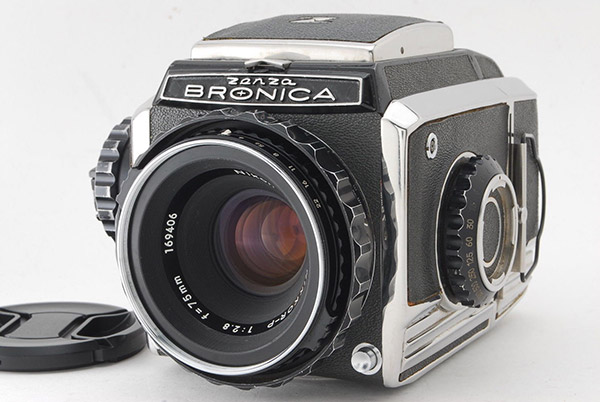Frigidaire Product Manuals. Having trouble locating your Frigidaire product manuals? Frigidaire manuals have been made available via free download in an Adobe Acrobat PDF format. Searching for your product’s manuals is easy. Simply enter your model number in the field below and click 'Search'. Instructional manuals and repair manuals are readily available, if needed. Zenza Bronica S2 SLR Manual The Zenza Bronica S2 is the Ultimate 6cm x 6cm single lens reflex camera. With interchangeable film back magazine, it permits the change of film type in mid-roll (black-and-white to color or color to black-and-white, indoor to daylight etc) and the shooting of several rolls of film without reloading. #8076 - Zenza Bronica ETRS, ETR-S Repair Manual. Detailed repair instructions, exploded views and wiring schematics with illustrated numbered parts list. Note: several pages in the parts list are light and difficult to read but the manual is totally useable. 70 pages, $18.00. Bronica Our library contains nearly eight hundred factory service manuals, repair articles, and tutorials for repairing cameras and other types of photographic equipment. This is the largest online collection of free service manuals that we know of. All of the manuals we offer now are free PDF downloads. Repair and Service of Manual SLR Cameras. We service just about any brand and model of 35mm Manual SLR cameras from the early 1960's through the end of the 1990's. Legendary cameras such as Minolta SRT and X-Series, Canon FT and A-series.
- EC TL
- Digital Back For Bronica Etrsi
- C
- Bronica Vs. Mamiya Vs. Hasselblad For First Medium Format ...
Bronica cameras usually are very sturdy. You can find them in excellent condition, despite their considerable age. But unfortunately, any complex mechanism has weaknesses.Many users complain that they are having trouble focusing. Lens doesn’t reach to infinity and on the finale negatives there are quite a lot of misfocused frames. The problemlies in the fact that the sealing foam loses its properties over time, turning into a sticky mess. In this short article I will explain to you how to solve this problem. Also I’ll describe the option of replacing the standard focusing screen to a brighter one with a split image.
We’ll need:
1. Flat-blade screwdriver
2. New seal. Here you can improvise. Personally, I have used self-adhesive sealing for windows (it’s useful, no need to mess around with glue, easy to cut). You can take an ordinary householdsponge, foam from cases or other sufficiently dense foam material.
3. Glue (for non-self-adhesive seal)
4. Household cleaner
Unscrew the four screws that secure the metal frame. Under the two screws holding the metal bracket that secure the waist level finder there are two brass washers and small steel pads. Be careful, don’t lose them. Caution! The screws are made of a very soft metal. It is easy to damage them. Use a well sharpened screwdriver of the correct size:
Nowwe see thecamera body, the waist level finder bracket, the Fresnel lens, the ground glass and the metal frame that fixes all these parts together:
Here’s a close-up:
On the backside of the frame, wewill seethe old sealing foam.Most likely, a matte screenisfirmlyglued to theframe.Our goal isto remove the oldsealand clean thematte screen. Carefully separate the matte screen from the metal frame. Trynot to touch the matte surface!Simply, put it in a weaksolution of water andhousehold cleaner. Thenrinse itwith clear water. It is very important not to touch the matte surface of the screen! You can damage it. Now clean the metal frame with any alcohol-containing cleaner. Let it dry.
Do the same thing that you did with the matte screen with the Fresnel lens. Try not to touch the surface with concentric circles. If dirt gets between these “ribs” it will be almost impossible to remove it.
Then apply the new sealant on the frame. Make a thicker layer than is needed to make sure it will give enough pressure:

If desired,you canblack paint the seal with a permanent marker.
Do not be amiss to slightly bend up the top edges of the metal springs. This will provide a more secure fit of the Fresnel lens to the matte surface:

Puttingall this mess in the reverse order. First, put the Fresnel lens on springs. Important! Put it with the ribbedside up(the smoothside facing themirror). The lens isa rectangularshape, so setting it in the correct position will not cause any difficulties:

Now we cometo an interestingpart. At this point,you can installthe originalmatte screen, or use a brighter screen with a split image, which you can purchase on Ebayfor example. Since the locking system of the focusing screen is simple and flexible, the thickness and the size of the new matte screen are irrelevant (within reason). The important thing is that the new matte screen should be without the Fresnel lens on the upper surface (there is no need in two Fresnels lenses). So, put the matte side of the screen to the mirror (the smooth side watching us):
EC TL
I also tried to put the matte screendirectly, bypassing the Fresnel lens. But unfortunately, the focus became completelymisaligned and needed some serious readjustment.I have postponed this optionuntil better times.
We come to the laststep.Install theframe andfastenall thescrewsback.The seal, which stands out from under theframecan be easilytucked byusinganywooden or soft plastic stick (orsomething like that).
Checking the quality of work is very simple. Press slightly on the focusing screen. Particularly along the edges. If there is no backlash, congratulations! The seal tightly presses the entire structure. Now you can shoot!
Bronica cameras usually are very sturdy. You can find them in excellent condition, despite their considerable age. But unfortunately, any complex mechanism has weaknesses.Many users complain that they are having trouble focusing. Lens doesn’t reach to infinity and on the finale negatives there are quite a lot of misfocused frames. The problemlies in the fact that the sealing foam loses its properties over time, turning into a sticky mess. In this short article I will explain to you how to solve this problem. Also I’ll describe the option of replacing the standard focusing screen to a brighter one with a split image.
We’ll need:
1. Flat-blade screwdriver
2. New seal. Here you can improvise. Personally, I have used self-adhesive sealing for windows (it’s useful, no need to mess around with glue, easy to cut). You can take an ordinary householdsponge, foam from cases or other sufficiently dense foam material.
3. Glue (for non-self-adhesive seal)
4. Household cleaner
Unscrew the four screws that secure the metal frame. Under the two screws holding the metal bracket that secure the waist level finder there are two brass washers and small steel pads. Be careful, don’t lose them. Caution! The screws are made of a very soft metal. It is easy to damage them. Use a well sharpened screwdriver of the correct size:
Nowwe see thecamera body, the waist level finder bracket, the Fresnel lens, the ground glass and the metal frame that fixes all these parts together:

Here’s a close-up:

On the backside of the frame, wewill seethe old sealing foam.Most likely, a matte screenisfirmlyglued to theframe.Our goal isto remove the oldsealand clean thematte screen. Carefully separate the matte screen from the metal frame. Trynot to touch the matte surface!Simply, put it in a weaksolution of water andhousehold cleaner. Thenrinse itwith clear water. It is very important not to touch the matte surface of the screen! You can damage it. Now clean the metal frame with any alcohol-containing cleaner. Let it dry.
Do the same thing that you did with the matte screen with the Fresnel lens. Try not to touch the surface with concentric circles. If dirt gets between these “ribs” it will be almost impossible to remove it.
Digital Back For Bronica Etrsi
Then apply the new sealant on the frame. Make a thicker layer than is needed to make sure it will give enough pressure:
If desired,you canblack paint the seal with a permanent marker.
Do not be amiss to slightly bend up the top edges of the metal springs. This will provide a more secure fit of the Fresnel lens to the matte surface:
Puttingall this mess in the reverse order. First, put the Fresnel lens on springs. Important! Put it with the ribbedside up(the smoothside facing themirror). The lens isa rectangularshape, so setting it in the correct position will not cause any difficulties:
Now we cometo an interestingpart. At this point,you can installthe originalmatte screen, or use a brighter screen with a split image, which you can purchase on Ebayfor example. Since the locking system of the focusing screen is simple and flexible, the thickness and the size of the new matte screen are irrelevant (within reason). The important thing is that the new matte screen should be without the Fresnel lens on the upper surface (there is no need in two Fresnels lenses). So, put the matte side of the screen to the mirror (the smooth side watching us):
I also tried to put the matte screendirectly, bypassing the Fresnel lens. But unfortunately, the focus became completelymisaligned and needed some serious readjustment.I have postponed this optionuntil better times.
C
We come to the laststep.Install theframe andfastenall thescrewsback.The seal, which stands out from under theframecan be easilytucked byusinganywooden or soft plastic stick (orsomething like that).
Checking the quality of work is very simple. Press slightly on the focusing screen. Particularly along the edges. If there is no backlash, congratulations! The seal tightly presses the entire structure. Now you can shoot!



